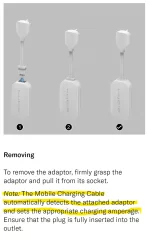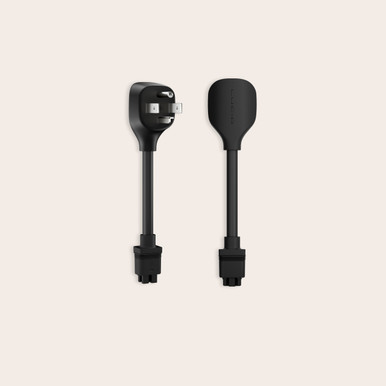What you've linked to is an NEMA 14-50 plug, and you could. But there's very little reason why you'd want to.
The Lucid Home Charging Station has four DIP switches inside and they must be adjusted at installation time to match the breaker. There might be reasons not to go with the maximum, such as if you are replacing an outlet, and the wires are rated for less than the maximum, or you are adding wiring but a qualified electrician tells you that there's a maximum that your system can handle without more substantial work.
I used something like that cord for a Tesla wall connector, and it intentionally crippled it by limiting it to 40A on a 50A breaker. I did it because I already have a NEMA 14-50 outlet, and I wouldn't have installed an outlet for that purpose. And by crippled, it means that it will still charge my Tesla at its maximum rate but won't charge some other Teslas at their maximum rate, so I didn't really care. I could charge a Lucid with it with an adapter, but if I hard wired the same unit, meaning that I'd need a different breaker, different wiring, etc, then it would charge a Lucid faster. If I had had that wall unit before any wiring was done, I wouldn't have put in the outlet.
If you have something like a 14-50 outlet or dryer outlet already, and you think that there's no reasonable situation in which you'd need to add range faster (a dryer outlet could add up to 24 miles of range per hour, which would mean daily charging would take less than two hours per night for the average user) then it might be a reason to add a cord and set the unit for a lower amperage if you'd like to avoid a big electrical project. But if you are going to do that, you might as well buy something that plugs in in the first place. It will be about a third of the price.
Also, if you have an existing outlet such as a dryer outlet, you could also use a smart splitter, in which case something that plugs in would work. Again, the Lucid unit would be overkill in that case. The only UL listed smart splitter I know of is the NeoCharge, and it works for people who already have an outlet, have little chance of needing to charge two cars (or charge a car and run a dryer) at the same time, and want something that will dynamically switch off one outlet. But if you don't already have a suitable outlet, and don't plan to use the same outlet for some other purpose, then adding a power cord is a bad idea, especially if you are paying somebody to install it.
I would expect the installation costs to be higher if you had to pay somebody to add that cord and put in a 14-50 outlet, because the wires that go into the back of 14-50 outlet could just as easily go into the Lucid Home Charging station itself. So this idea would raise your costs, limit your capability, and have no advantage unless there's something that you didn't mention.


